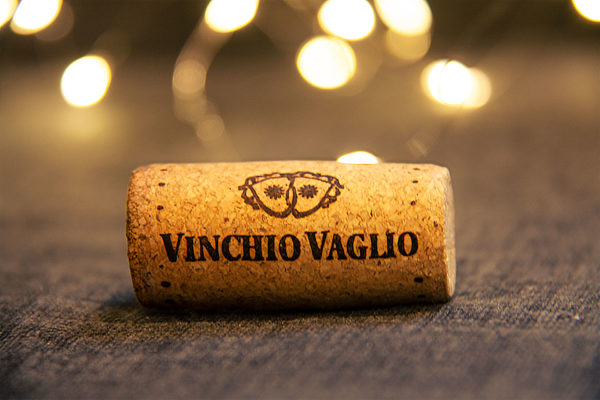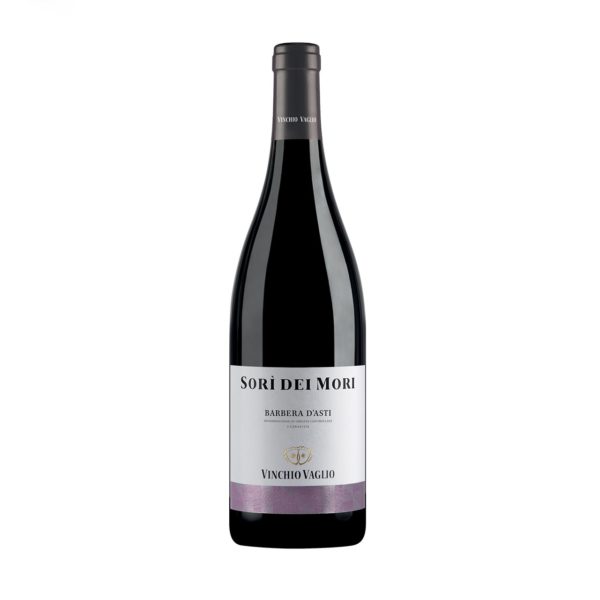Choosing the stopper for the bottle of wine is like choosing the right shoe to match the dress… because the details count!
When you uncork a bottle of one of Vinchio Vaglio’s wines, you will find different stoppers on different products. Have you ever noticed?
People are often curious about the reasons, thinking it’s just a small difference, but the truth is that behind the choice of the stopper hides a whole world … and today we are ready to reveal it!
The choice of the stopper for bottles of wine
Let’s start with the basics, because the choice of stopper for a wine is anything but secondary.
Stoppers for bottles of still wine can act either inside the neck of the bottle (as in technical stoppers or cork stoppers) or outside of it (as in crown or screw stoppers). Traditional wine stoppers are cylindrical in shape and have a diameter that is 25% larger than the neck of the bottle, so that they can be compressed during capping. In this way, their subsequent expansion ensures hermetic closure and prevents evaporation and oxidation of the wine.
The world of wine closures is experiencing a period of great ferment, thanks to the advent of alternative solutions to what for centuries was considered the “king of stoppers”: the cork stopper.
If – in fact – cork has been used since ancient times to preserve wine in amphorae, the technical stopper (this term indicates all stoppers that are not made of one-piece cork) is definitely a far more modern introduction, aimed at solving the two most serious problems wines present: the smell of cork and the control of the wine’s evolution over time.
To better understand the importance the choice between the two kinds of stoppers has nowadays, it is enough to know that bottling the same wine with different stoppers will result in very different wines, especially when considering the time of tasting (within 6-12 months or later).

One-piece natural cork stopper
This type of stopper is made from the bark of plants coming mainly from Sardinia or Spain, having been aged for a long time.
The task of cork is to allow the wine to evolve as slowly and harmoniously as possible, since the amount of oxygen it comes into contact with is very low, yet not completely inexistent (this is also why it is best to keep the bottles lying down, so that the contact between the wine and the cork does not allow any air to enter).
The choice of a cork stopper is also often dictated by appeal and image-related reasons.
The importance of uncorking a great bottle is connected to the centuries-old tradition of doing so. It is a custom that deserves to be maintained, especially for those great wines that take years to be enjoyed at their best.
Over the last 20-30 years, however, the demand for cork stoppers has increased considerably, with the result that the bark is taken out too early, so much so that ageing may sometimes be insufficient. This means the problems with cork stoppers have increased. It can thus happen that cork is responsible for the famous “corky taste/smell” in the wine, a phenomenon that occurs when the cork already has mould at the time of collecting the bark, due to the reasons we described above.
Nowadays, the problems of mould have been overcome with natural and effective treatments, but it can still happen that the wine is not perfect because of the cork, even when the bad smell cannot be perceived.
We use cork stoppers of the highest quality, and only on those wines that have a potential for very long in-bottle ageing (and consequently a higher price that is capable of justifying the expense necessary for the one-piece cork stopper).
Where do you find it in Vinchio Vaglio wines? We use it on the Barbera selections we expect to evolve over time: Laudana, Vigne Vecchie Superiore and Sei Vigne Insynthesis, Gajera.
Technical stopper (or agglomerated stopper)
What is the best alternative to cork stoppers?
Technical stoppers are micro-agglomerated stoppers made of cork, yet they are, in fact, an agglomeration of small parts of cork, not one-piece stoppers. This is a choice we make for wines that have a shelf in-bottle life of no more than 5 years. This way, we give our customers a high guarantee that there will be no corkage problems on our bottles.
Where do you find it in Vinchio Vaglio wines? We use this type of stoppers on the youngest, freshest and most fruity wines, in order to preserve their features for as long as possible.
The choice of capping at Vinchio Vaglio
At Vinchio Vaglio, before choosing which stopper to use, we carry out bottling simulations on different wines. We run numerous tests, both with technical stoppers and natural cork stoppers, to ensure we choose the right stopper for each wine.
The choice of stoppers is also important in terms of sustainability. In recent years, thanks to such choice we have managed to reduce our carbon footprint by 66.4 tonnes of CO2 per year. An important choice to protect the future of our company, our vineyards and our planet.
The opinion of oenologists Beppe Rattazzo and Matteo Laiolo
It is essential to identify the best capping for each type of wine to ensure that it can express itself to the fullest within the bottle.
The stopper represents, before tasting, the expressiveness, power and longevity of the wine itself. It is part of its identity card.









